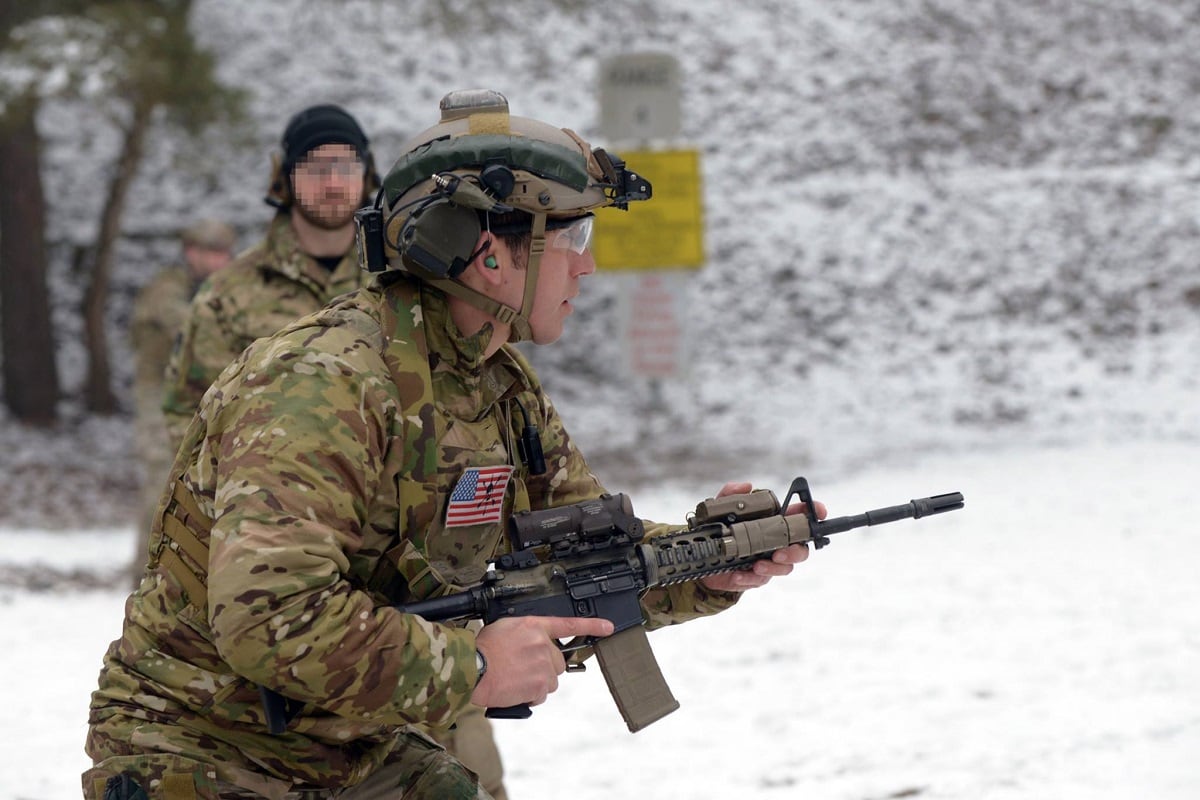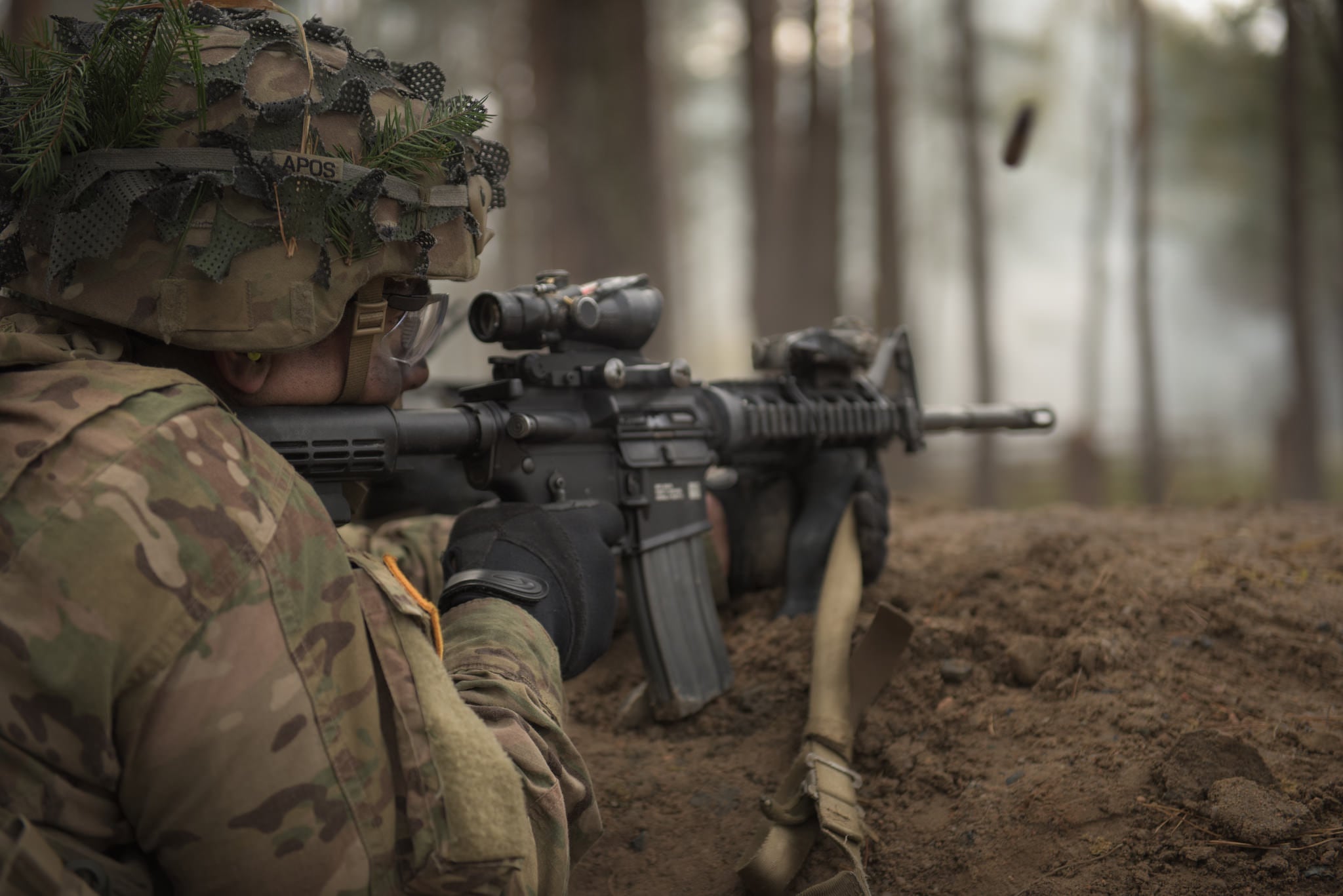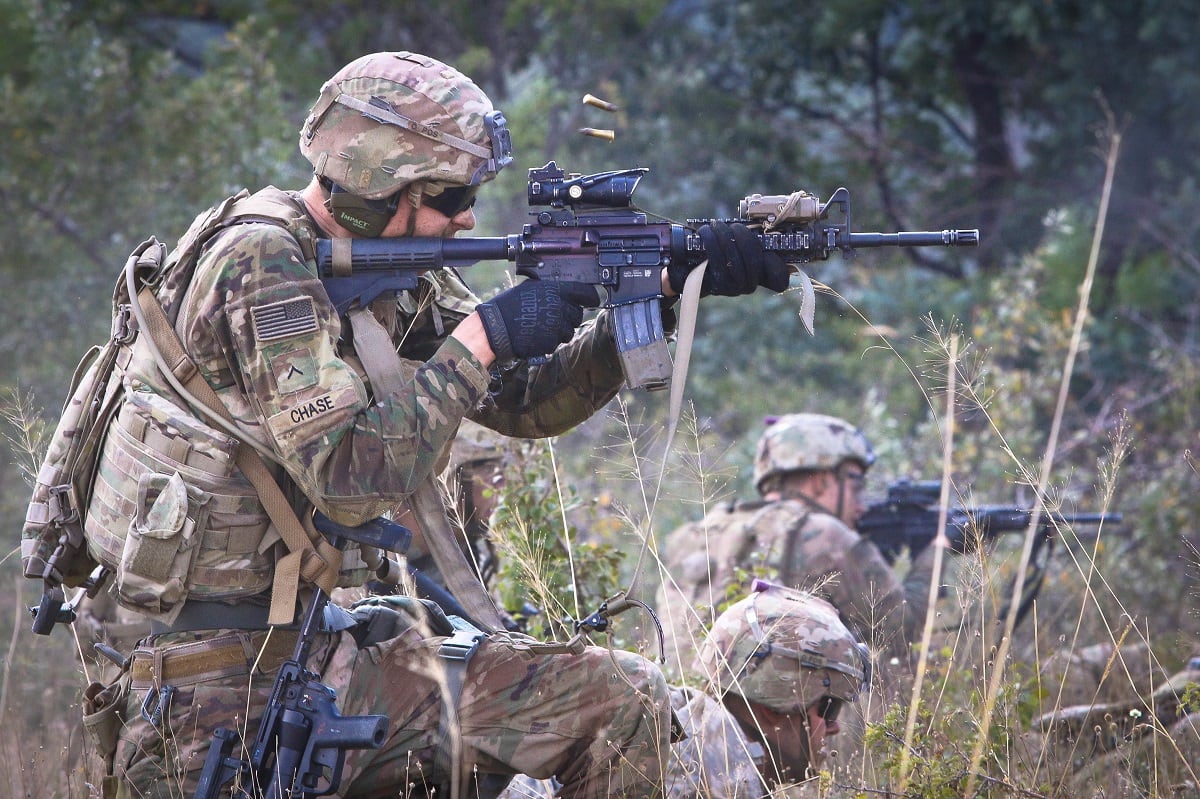The Army is now fixing a previously undiagnosed, unintended discharge problem that’s affecting some of its M4 carbines.
The problem that stymied researchers initially was when soldiers at Fort Knox, Kentucky, found that some M4s would fire when charged and the selector switch was positioned between safe and fire.
The U.S. Army Tank-automotive and Armaments Command sent out a safety message on March 26 noting the original problem.
“The M4A1 was charged and the weapon’s selector was positioned between ‘semi’ and ‘auto.’ When the weapon’s trigger was pulled, the weapon did not fire. When the selector was then moved into either ’semi’ or ’auto,’ the weapon fired without a trigger pull.”
RELATED

A second message, on April 16, expanded the safety message beyond M4s and required armorers to check M16 service rifles and modified shooter immediate action drills.
News of the fix, first reported by Military.com, was found after about 50,000 of the weapons had been inspected.
In a statement, TACOM spokesman R. Slade Walters wrote:
“After receiving a significant number of reports from the field and an average failure rate of about 6 percent of the weapons inspected, we ended the inspections and have determined that the cause of the problem is a tolerance stack of the internal firing components.”
“The problem is fixed by modifying the selector to remove the tolerance issue and the fault. TACOM is working on an Army-wide directive to repair weapons with the issue that will be released when it is approved at the appropriate levels,” he wrote.
The problem is not with the individual components. Instead, it exists only when certain components in a small percentage, 6 percent to 9 percent, of the weapons, stick. Those components are being modified to eliminate the stoppage, which engineers believe has caused the potentially unintended discharge.
The M4, M4A1, M4A1 PIP, M16A2 and M16A4 models were inspected. All but the M16A2 models had failures, but those rates varied, Walters said.
The M4A1 PIP had the highest failure rate at 9 percent, Walters told Army Times.
The standard M4 reported less than 1 percent. The M4A1 had an estimated 6 percent.
When contacted in June, Walters estimated that 900,000 weapons would have to be inspected and repaired, He estimated that process, including the fixes, would take between one year and 18 months.

Marine Corps Systems Command officials were made aware of the problem, issued their own safety message on May 24, but they have not reported detailed numbers of failures or fixes.
While the weapons continue to be fixed, the following function tests and modified drills were released for soldiers to follow.
The following function test is required to be performed on all M16 and M4 series rifles and carbines within 10 days or prior to live fire, whichever comes first, according to the message.
- Ensure weapon is clear by observing the chamber, the bolt face, and magazine well. The weapon should always be pointed in a safe direction.
- Charge the weapon, place selector lever on the safe position and pull trigger. The hammer should not drop.
- Move the selector lever to the semi position, then move the selector to a position between semi and auto and squeeze the trigger. The hammer should not drop when the trigger is squeezed. If the hammer does drop when the trigger is squeezed, this is a failure. Record this information and continue to the next step.
- If the hammer does not drop, move the selector in either direction. If the hammer drops without squeezing the trigger, this is a failure. Record this information.
- Gather information recorded from failures at steps (3) and (4) and segregate the weapon for further investigation. Contact TACOM with the weapon serial number.
- If the weapon passes steps (3) and (4), the function check is complete.
The Army also issued an adjusted Immediate Action Drill. The steps are as follows:
- Confirm that the selector is set to semi, auto or burst.
- Slap upward on the magazine to make sure it is properly seated.
- Pull the charging handle completely to the rear and hold.
- Observe for ejection of case or cartridge, and ensure the cartridge or case is ejected and the chamber is clear.
- Release the charging handle to feed a new round.
- Tap the forward assist to ensure the bolt is closed.
- Squeeze the trigger; the weapon should fire.
Todd South has written about crime, courts, government and the military for multiple publications since 2004 and was named a 2014 Pulitzer finalist for a co-written project on witness intimidation. Todd is a Marine veteran of the Iraq War.






